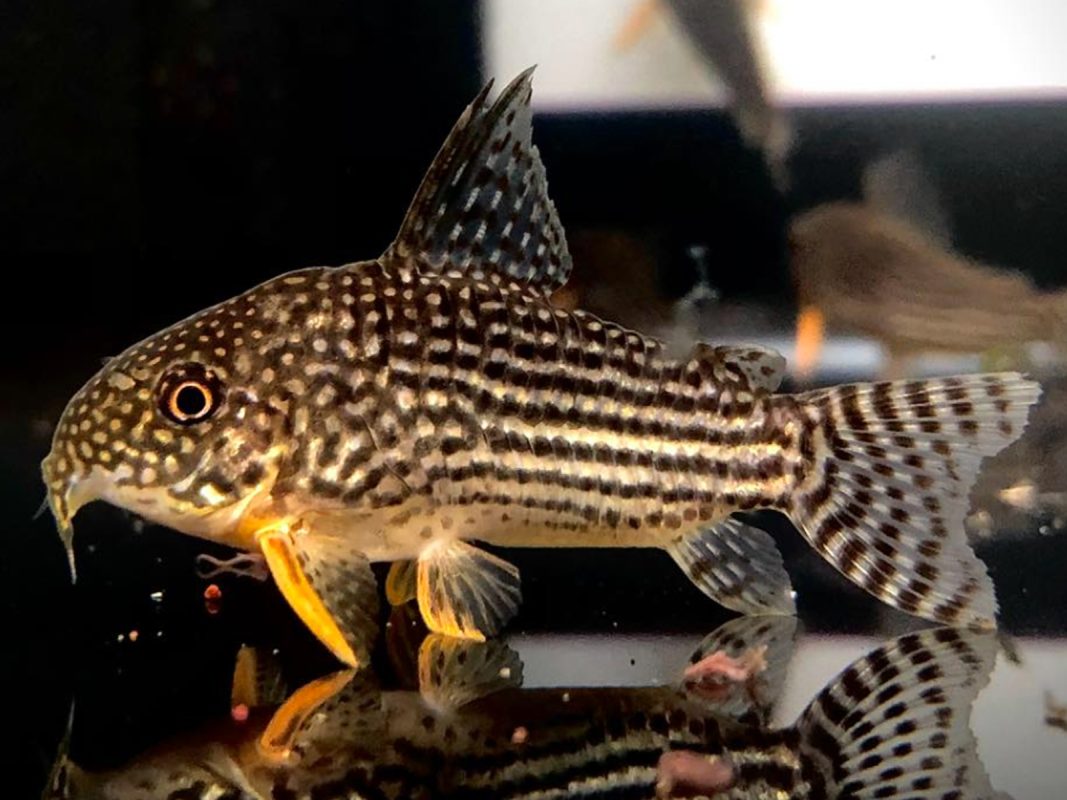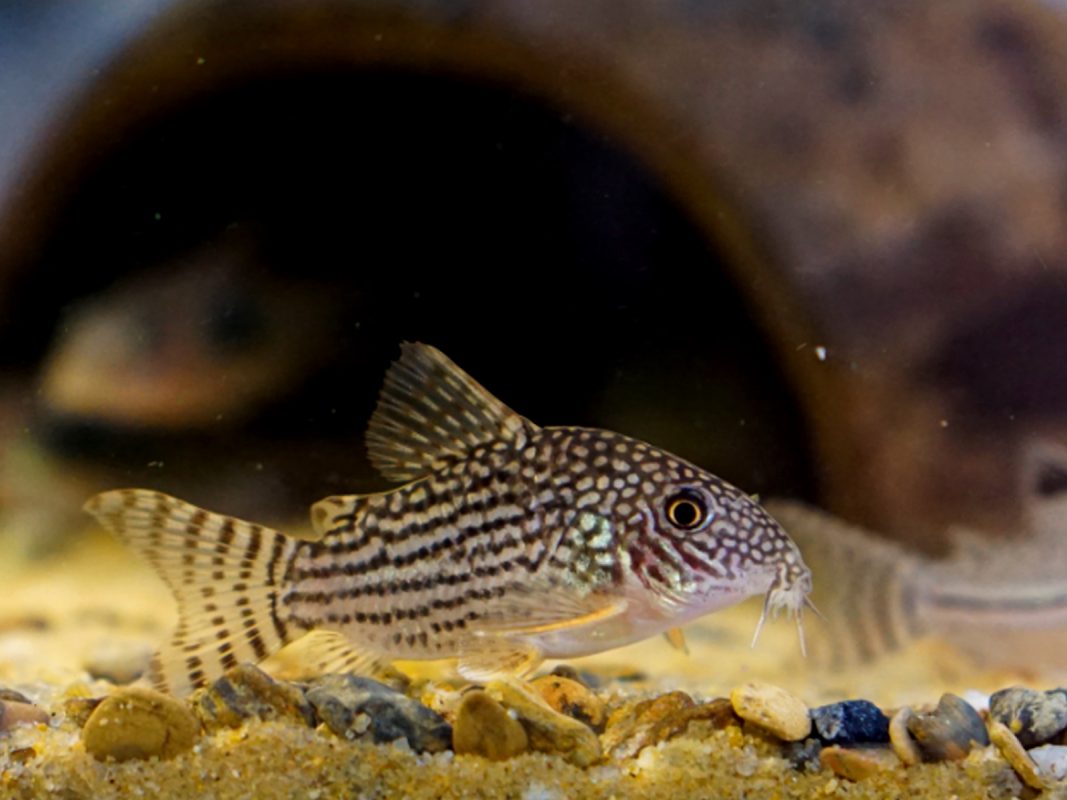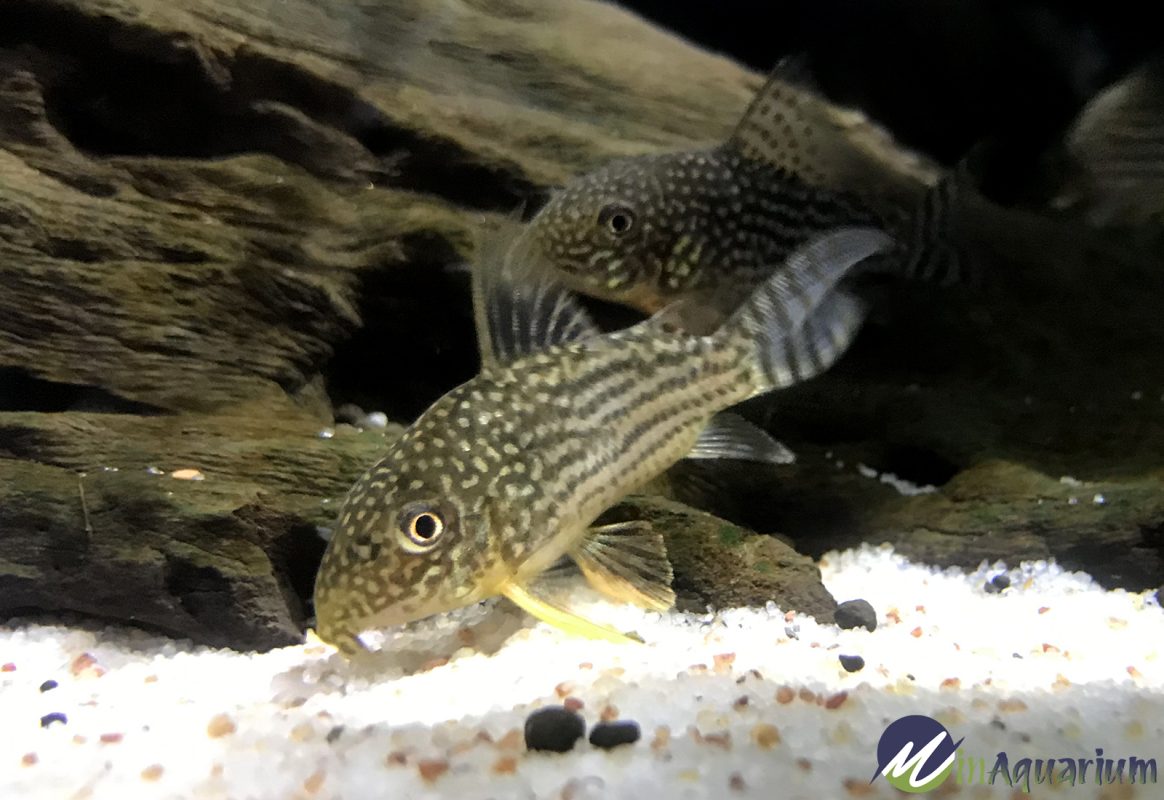Blogs
Corydoras haraldschultzi: A Comprehensive Guide to the Schultz’s Cory Catfish
Corydoras haraldschultzi, commonly known as the Mosaic Cory or Schultz’s Cory, belongs to the Corydoradinae sub-family within the Callichthyidae family. These tropical freshwater fish are highly valued by aquarium enthusiasts for their unique appearance, peaceful temperament, and compatibility with a variety of tank mates. This comprehensive guide provides detailed information about their origin, habitat, physical characteristics, behavior, tank setup, diet, breeding, care and maintenance, and compatibility, offering valuable insights to help you create the best environment for Corydoras haraldschultzi in your aquarium.
Origin and Habitat
Corydoras haraldschultzi, commonly known as Mosaic Corydoras, are native to the rivers and tributaries of Brazil and Bolivia in South America. They inhabit slow-moving river environments, flooded forests, and areas with dense aquatic vegetation. These distinct habitats provide the conditions necessary for their omnivorous diet, which includes small invertebrates, organic detritus, and algae.
In their natural habitat, Mosaic Corydoras prefer sandy or muddy substrates, which allow them to engage in their natural foraging behavior. This substrate type not only supports their dietary needs but also helps prevent injury to their barbels, an essential feature they rely on for detecting food. The environmental parameters these fish thrive in include soft, acidic to neutral water with moderate temperatures typical of tropical regions.
Although Mosaic Corydoras are a popular species in the aquarium trade, there is currently no information confirming their presence or naturalization in waterways outside South America, particularly in the United States. While these fish are widely available through the pet trade and can be kept in aquariums worldwide, they remain constrained to their native habitats in the wild.
Physical Characteristics
Corydoras haraldschultzi, also known as Schultz’s Cory, possess distinctive physical features that make them easily recognizable. Their typical triangular body shape is complemented by a more pointed head and a long snout. Compared to other Corydoras species, they have a slightly deeper body, and their dorsal fin includes 7 to 8 soft rays, adding to their distinctive profile.
One of the most striking features of Schultz’s Cory is their coloration and pattern. Their base body color is light, overlaid with 6 to 7 bands of dark-colored markings that extend from the front of the dorsal fin to the caudal peduncle. Additionally, dark gray reticulated markings on the head and snout stretch towards the leading ray of the dorsal fin. The pectoral and ventral fin spines are orange, and the fins behind these spines are clear with black bands, contributing to their eye-catching appearance.
Schultz’s Cory is often confused with Corydoras sterbai. While both species are adorned with intricate patterns, the key distinguishing feature lies in the head pattern. Corydoras haraldschultzi exhibits a pattern of black dots on a gold background on their head, whereas Corydoras sterbai has gold dots on a black background. This distinction is crucial for hobbyists aiming to correctly identify and care for their fish.

Behavior and Temperament
Mosaic Corydoras are known for their peaceful and social nature, making them ideal inhabitants for community aquariums. They are non-aggressive and cohabit well with a variety of tank mates. These small and charming fish thrive in groups, often forming tight-knit shoals. In their natural habitat, being part of a shoal offers multiple benefits such as reduced stress, higher chances of finding food, and protection from predators.
In an aquarium setting, Mosaic Corydoras continue to exhibit this social behavior, displaying various forms of communication through visual and chemical signals. Shoaling not only enhances their welfare but also makes their natural behavior more noticeable to observers, providing a dynamic and engaging display in the tank.
When foraging for food, Mosaic Corydoras exhibit cooperative behavior, often forming feeding aggregations where multiple individuals gather to search for food together. This not only boosts their chances of finding food but also strengthens their social bonds within the group. Their peaceful demeanor and compatibility with other species make them an excellent choice for diverse aquarium communities.
Tank Setup
Creating an optimal environment for Corydoras haraldschultzi in an aquarium setting involves replicating their natural habitat as much as possible. Here are the essential considerations for setting up a tank for these fascinating fish:
- Tank Size: A minimum tank size of 20 gallons is recommended, with larger tanks (30-40 gallons) being more suitable to accommodate a small school of Mosaic Corydoras. Larger tanks reduce the risk of territorial disputes and provide ample space for exploration.
- Substrate: A soft, sandy substrate is crucial for these catfish. Their sensitive barbels can be damaged by coarse gravel, so choosing appropriate sand like CaribSea’s Eco-Complete African Cichlid Sand or Seachem Flourite Sand ensures their well-being and encourages natural foraging behavior.
- Filtration: A high-quality filtration system is essential to maintain water quality. Canister filters from brands like Fluval or Eheim are excellent choices, providing mechanical, chemical, and biological filtration. Adding a sponge pre-filter on the intake helps prevent juveniles from getting trapped and aids in maintaining water clarity.
- Decoration and Plants: Incorporate live or artificial plants, driftwood, and caves into the tank to provide hiding places and enrich the environment. Suitable live plants include Amazon Sword, Anubias, and Java Fern, which thrive under the same water conditions preferred by Corydoras haraldschultzi.
- Temperature and Lighting: Maintain a stable water temperature within the recommended range of 72-78°F (22-26°C) to ensure the health of Mosaic Corydoras. A reliable aquarium heater, such as those from Eheim, Fluval, or Aqueon, helps achieve and maintain the desired temperature. Moderate lighting conditions mimic their natural habitat and support plant growth.
By adhering to these tank setup guidelines, aquarium enthusiasts can create a nurturing environment that supports the health and vitality of Corydoras haraldschultzi, allowing them to exhibit their natural behaviors and thrive.
Diet and Feeding
Corydoras haraldschultzi are omnivorous, consuming a variety of food sources in their natural environment. In an aquarium setting, providing a balanced diet is crucial for their overall health and well-being.
- Primary Diet: These fish readily consume sinking dried foods available in the market. High-quality flake or pellet foods specially formulated for bottom feeders help meet their nutritional needs. Brands like Hikari and Tetra offer pellets designed for Corydoras and other catfish species.
- Supplementary Food: To offer a diverse diet, include smaller live and frozen foods such as bloodworms, Tubifex worms, and brine shrimp. These protein-rich foods closely mimic their natural diet and are readily accepted by Mosaic Corydoras. It is advisable to pre-rinse live foods to avoid introducing contaminants into the aquarium.
- Feeding Schedule and Quantity: Corydoras haraldschultzi are active feeders, particularly during nighttime when they commence their bottom foraging activities. Providing ample time, at least 30 minutes, for feeding ensures all individuals get their share. Feeding should be done 1-2 times daily, and the quantity should be manageable to prevent overfeeding, which can lead to poor water quality and health issues.
- Feeding Tips: Including vegetable matter in their diet is beneficial. Blanched vegetables like zucchini or spinach can be added occasionally. Additionally, ensuring that food particles reach the bottom of the tank prevents upper-level fish from consuming all the food, ensuring the Corydoras receive their required nutrition.
By offering a comprehensive and varied diet, ensuring proper feeding schedules, and maintaining high water quality, aquarists can support the well-being and longevity of Corydoras haraldschultzi in their aquariums.
Breeding
Breeding Corydoras haraldschultzi in captivity presents several challenges. To date, successful spawnings of this species are scarce, and specific breeding behavior and requirements remain under-documented. Here are some insights based on available information:
- Breeding Environment: General breeding conditions for Corydoras catfish involve warmer water temperatures ranging from 74-78°F (23-26°C) and a pH range of 6.5-7.5. These parameters should be adjusted gradually to simulate natural breeding triggers, such as the onset of the rainy season in their native habitat.
- Spawning Behavior: Corydoras exhibit a unique T-shaped mating position where the male inserts his pectoral fin into the female’s genital pore. The female then releases her eggs, which the male fertilizes. In the wild, eggs are typically laid in dense vegetation and are not guarded by the parents.
- Attempts and Documentation: Notable breeders such as Ian Fuller, Don Kenyon, Eric Bodrock, and Frank Falcone have attempted to breed C. haraldschultzi without documented success. The most described breeding behavior involves the female carrying fertilized eggs in her ventral fin pouch and placing them on cleaned surfaces like leaves or aquarium glass.
- Challenges and Recommendations: The lack of detailed breeding behavior documentation highlights the need for further research and experimentation by experienced aquarists. Setting up a dedicated breeding tank with ample vegetation or spawning mops, providing high-quality, varied diets, and maintaining optimal water conditions may increase the chances of successful breeding attempts.
While breeding Corydoras haraldschultzi in captivity remains a challenging endeavor, continued research and sharing of breeding experiences among aquarists may eventually lead to successful techniques and practices.
Care and Maintenance
Water Changes
Maintaining excellent water quality is paramount for the well-being of Corydoras haraldschultzi. These fish thrive in clean, well-oxygenated environments, necessitating regular water changes.
- Frequency and Amount: Perform 20-30% water changes weekly to keep the aquarium environment clean and healthy. For heavily stocked or larger tanks, increase the frequency or percentage of water changes (up to 50%) to manage waste and maintain water parameters within the optimal range.
- Water Conditioning: When performing water changes, always use a water conditioner to eliminate chlorine and other harmful substances from tap water. This prevents stress and potential health issues for the fish.
Tank Cleaning
Regular tank cleaning plays a crucial role in maintaining a healthy environment for Corydoras haraldschultzi.
- Substrate Maintenance: Clean the sandy substrate occasionally to remove uneaten food and detritus. Use a siphon to gently clean the substrate, avoiding disturbance to the fish and plants.
- Filter Maintenance: Ensure the filter operates efficiently by performing routine maintenance. Clean mechanical filter components, replace chemical filtration media as needed, and rinse biological media with aquarium water to preserve beneficial bacteria.
- Decoration and Plants: Periodically inspect and clean decorations, driftwood, and plants. Remove any algae buildup or debris, and trim overgrown plants to maintain a well-balanced tank environment.
Disease Prevention
The prevention of diseases is crucial for ensuring the health and longevity of Corydoras haraldschultzi.
- Common Health Issues: Corydoras haraldschultzi are susceptible to diseases such as Corydoras Velvet Disease, swim bladder disorders, and bacterial infections. Symptoms may include a velvet-like appearance, labored breathing, or abnormal swimming behavior.
- Preventative Measures:
- Regularly monitor the fish for any signs of disease.
- Quarantine new fish before introducing them to the main tank to prevent disease spread.
- Maintain optimal water conditions and avoid overfeeding to reduce the chances of health issues.
- Treatment: If disease is detected, promptly treat with appropriate medications following the manufacturer’s instructions. Quarantine affected fish if necessary to prevent the disease from spreading to other tank inhabitants.
By adhering to these care and maintenance practices, aquarists can ensure a healthy and thriving environment for Corydoras haraldschultzi, maximizing their enjoyment and minimizing health issues.
Compatibility
Tank Mates
Corydoras haraldschultzi are peaceful, community-oriented fish that get along well with various tank mates.
Here are suitable tank mates:
- Other Corydoras Species:
- Corydoras aeneus (Bronze Cory)
- Corydoras panda (Panda Cory)
- Corydoras paleatus (Peppered Cory)
- Corydoras julii (Juli Cory)
These species share similar care requirements and a peaceful disposition, allowing them to coexist harmoniously with Corydoras haraldschultzi.
- Peaceful Community Fish:
- Tetras (e.g., neon tetras, cardinal tetras)
- Rasboras
- Guppies
These mid-to-upper level swimmers add diversity to the tank and do not compete with Corydoras for space.
- Dwarf Cichlids:
- Apistogramma species
Dwarf cichlids can make suitable tank mates if they are not overly aggressive. Their bright colors and unique behaviors can enhance the visual appeal of the tank.
Compatibility with Other Corydoras Species
Corydoras haraldschultzi generally exhibit compatibility with other Corydoras species, provided the environment meets their shared care requirements. Here’s a comparison table of ideal water parameters for Schultz’s Cory and frequently cohabitated Corydoras species:
| Species | pH Range | Water Hardness (dGH) | Temperature Range (°C/°F) |
|---|---|---|---|
| Corydoras haraldschultzi | 6.0-7.2 | 2-25 | 22-27 / 71-81 |
| Corydoras aeneus | 6.0-7.5 | 2-20 | 22-28 / 71-82 |
| Corydoras panda | 6.0-7.2 | 2-20 | 20-25 / 68-77 |
| Corydoras paleatus | 6.0-7.5 | 2-15 | 18-25 / 64-77 |
| Corydoras julii | 6.5-7.5 | 2-15 | 23-26 / 73-79 |
These similar water parameters indicate that Corydoras haraldschultzi can coexist with other Corydoras species in the same tank, provided the environment meets the shared care requirements.
Ensuring a well-designed tank with proper water parameters, ample space, and compatible tank mates will enable Corydoras haraldschultzi to thrive in a diverse and harmonious aquarium community.

Conclusion
Summary of Key Points
Corydoras haraldschultzi, or Schultz’s Cory, is a captivating and peaceful tropical freshwater fish native to South America. Their distinctive appearance, social behavior, and compatibility with a variety of tank mates make them a popular choice among aquarium enthusiasts.
Key points include:
- Origin and Habitat: Native to Brazil and Bolivia, inhabiting slow-moving rivers and flooded forests with sandy or muddy substrates.
- Physical Characteristics: Light body color overlaid with dark bands, a pointed head, and reticulated head markings distinguish them from other species.
- Behavior and Temperament: Peaceful and social, exhibiting cooperative foraging behavior and thriving in shoals.
- Tank Setup: Requires a minimum tank size of 20 gallons with a soft, sandy substrate, high-quality filtration, and ample hiding places.
- Diet and Feeding: Omnivorous, consuming sinking dried foods, live/frozen foods, and occasional blanched vegetables.
- Breeding: Breeding in captivity is challenging, with limited documentation of successful spawnings.
- Care and Maintenance: Regular water changes, tank cleaning, and disease prevention are crucial for maintaining health.
- Compatibility: Compatible with other Corydoras species and peaceful community fish; avoid aggressive tank mates.
Resources for Further Information
For more details on Corydoras haraldschultzi, consider consulting the following resources:
- “Corydoras haraldschultzi: A Comprehensive Guide to the Schultz’s Cory Catfish”: An in-depth overview of origin, habitat, care, and breeding.
- “Mosaic Corydoras (Corydoras Haraldschultzi): Habitat, Care, Aquarium Maintenance” on Fello.pet: Covers characteristics, tank setup, water parameters, feeding, and health considerations.
- “Schultz’s Cory (Corydoras haraldschultzi)” on the Tropical Fish Keeping website: Detailed care requirements and compatibility.
- The Aquarium Wiki: Corydoras haraldschultzi Page: Information on origin, ***ing, tank compatibility, diet, and identification.
By exploring these resources, aquarists can gain a comprehensive understanding of Corydoras haraldschultzi, enabling them to provide the best possible care and environment for these intriguing and peaceful catfish.

